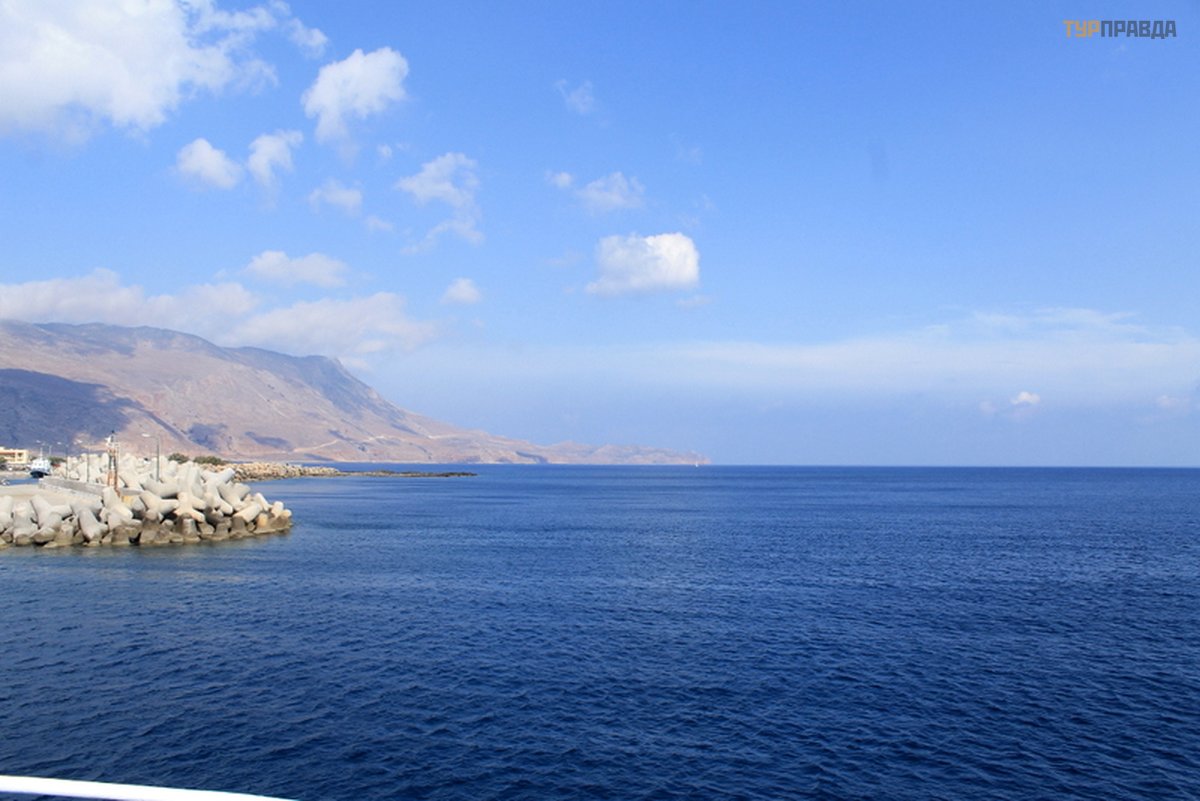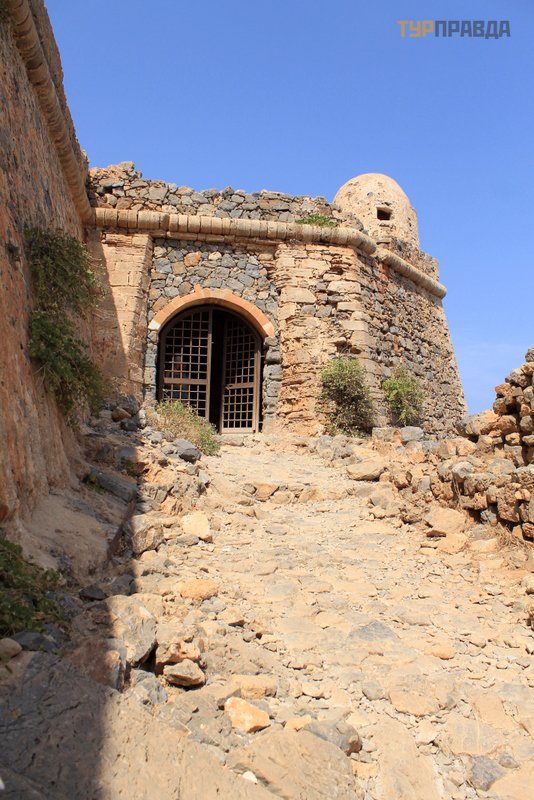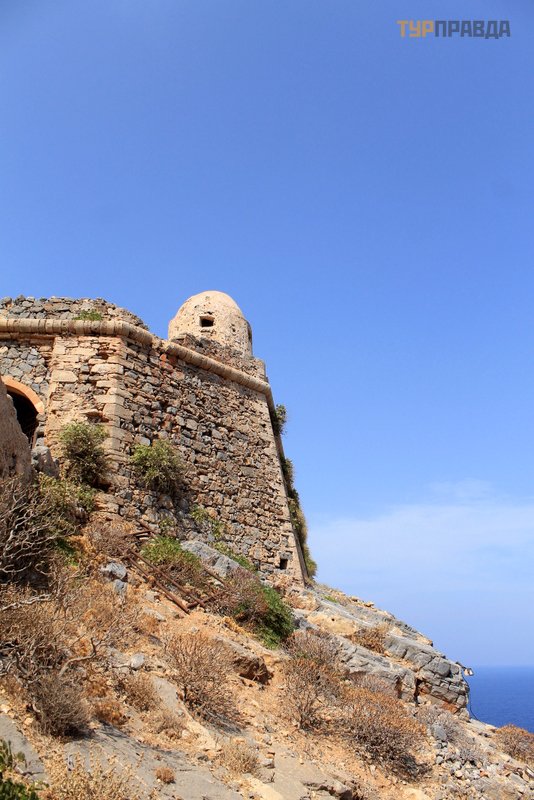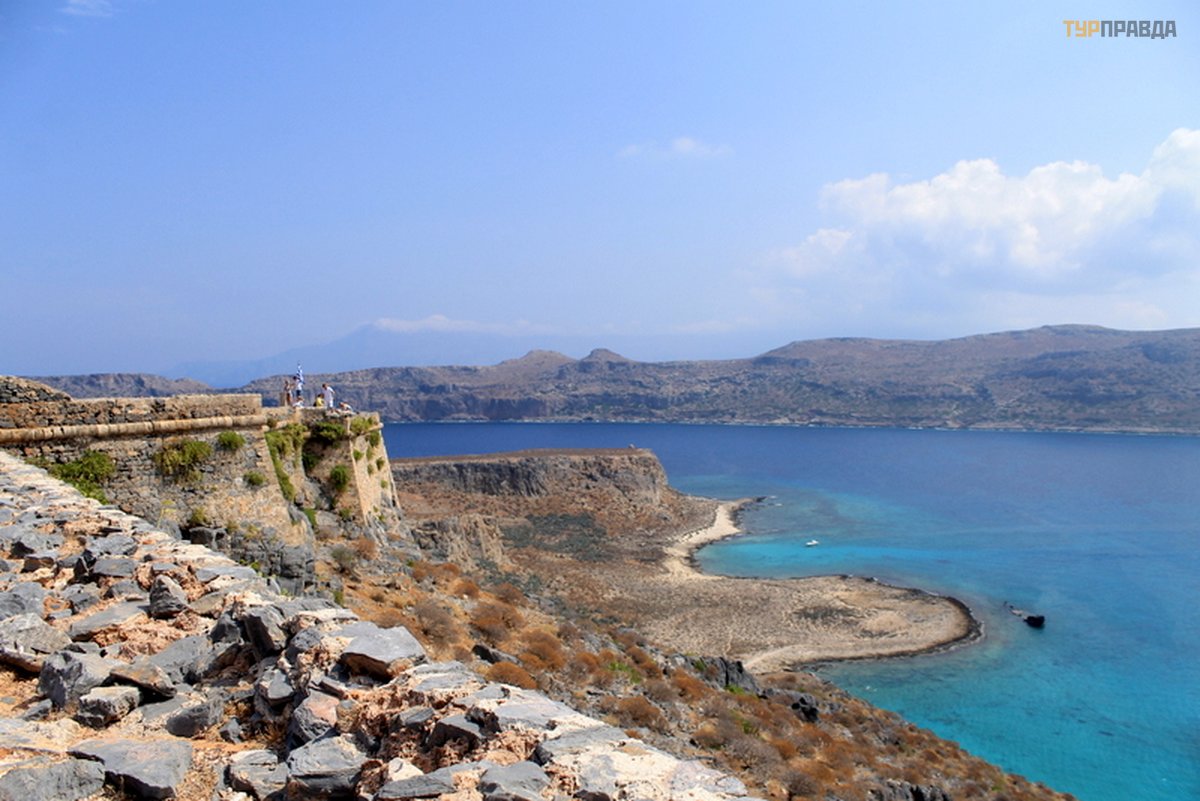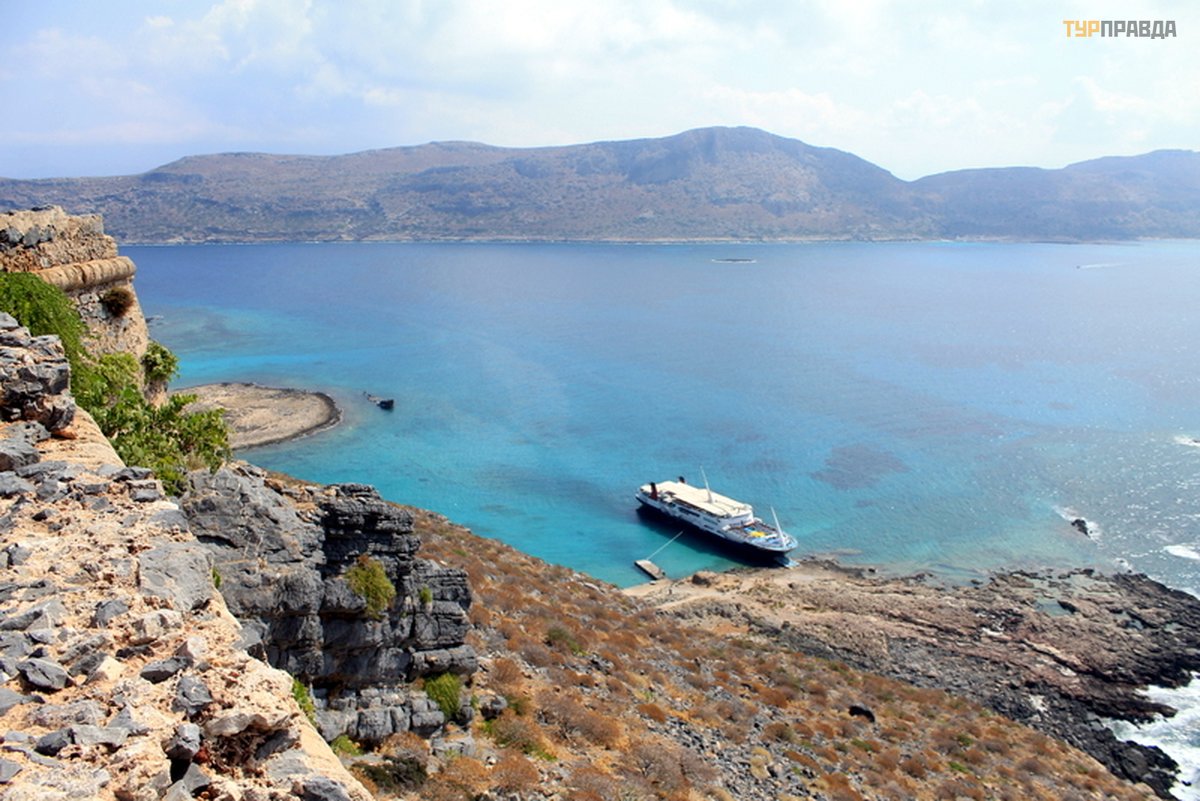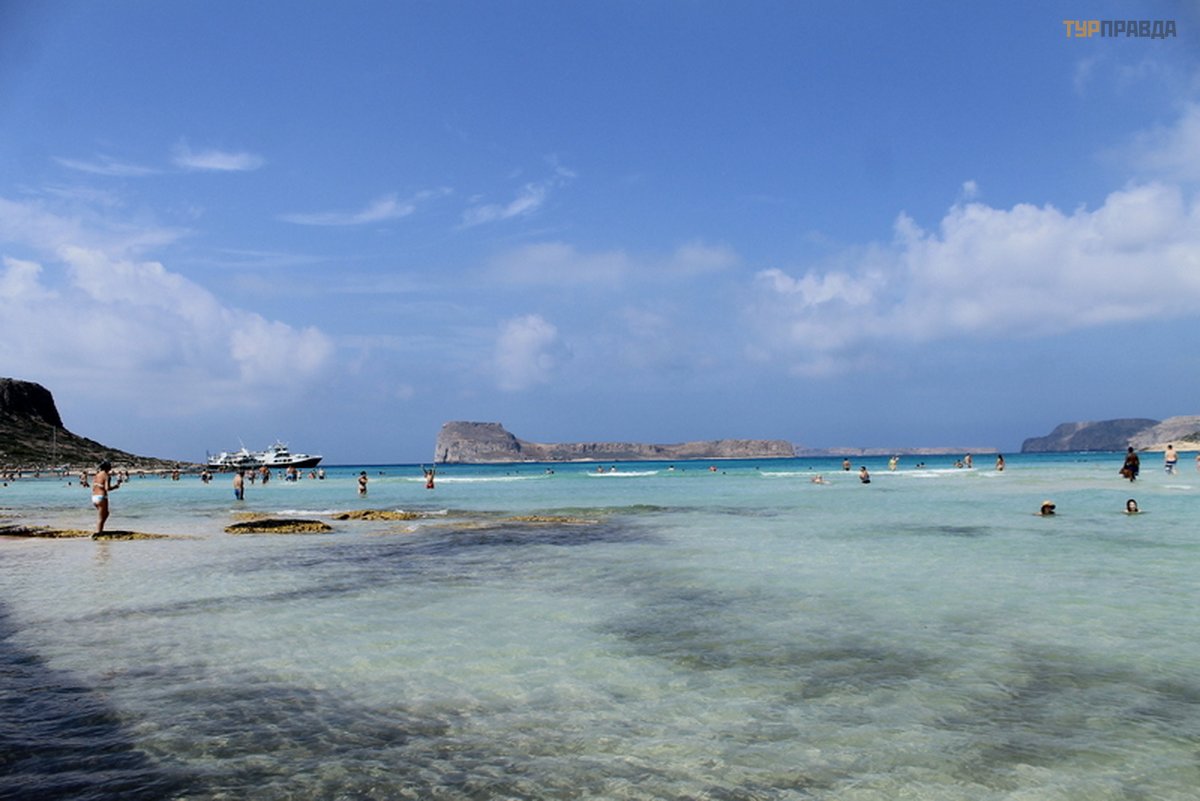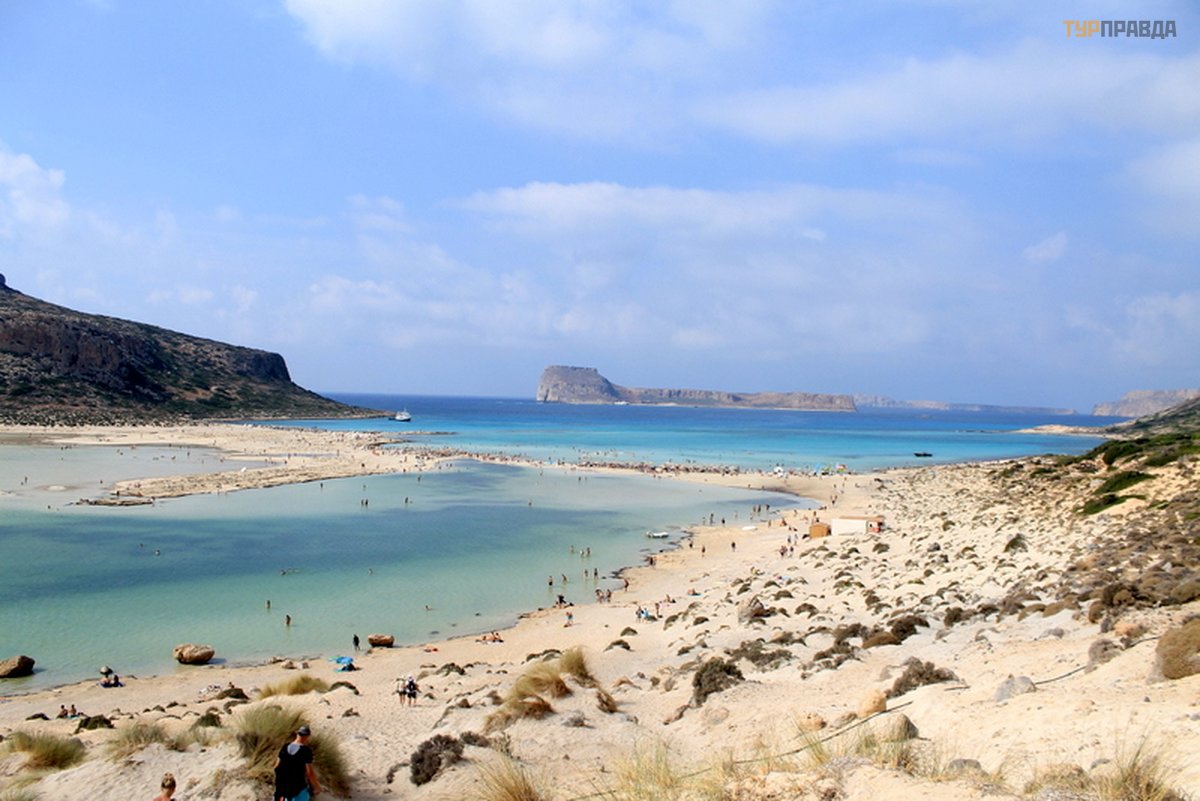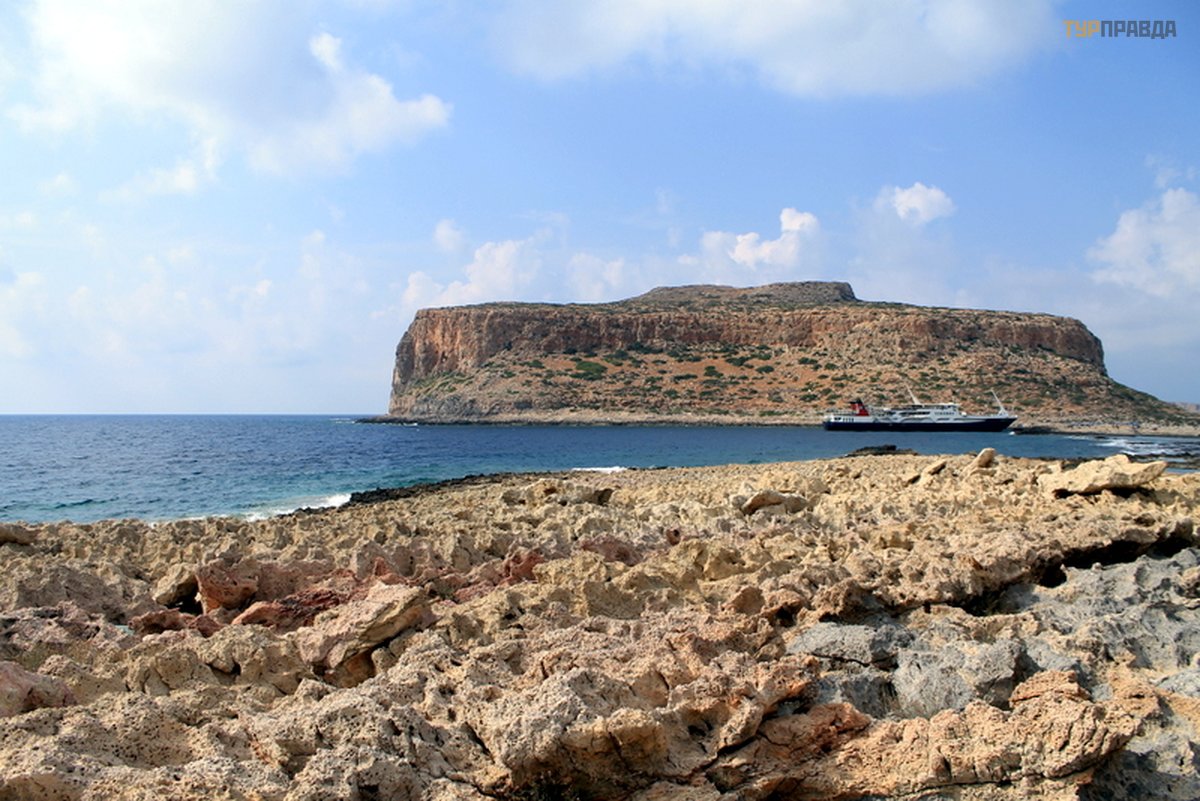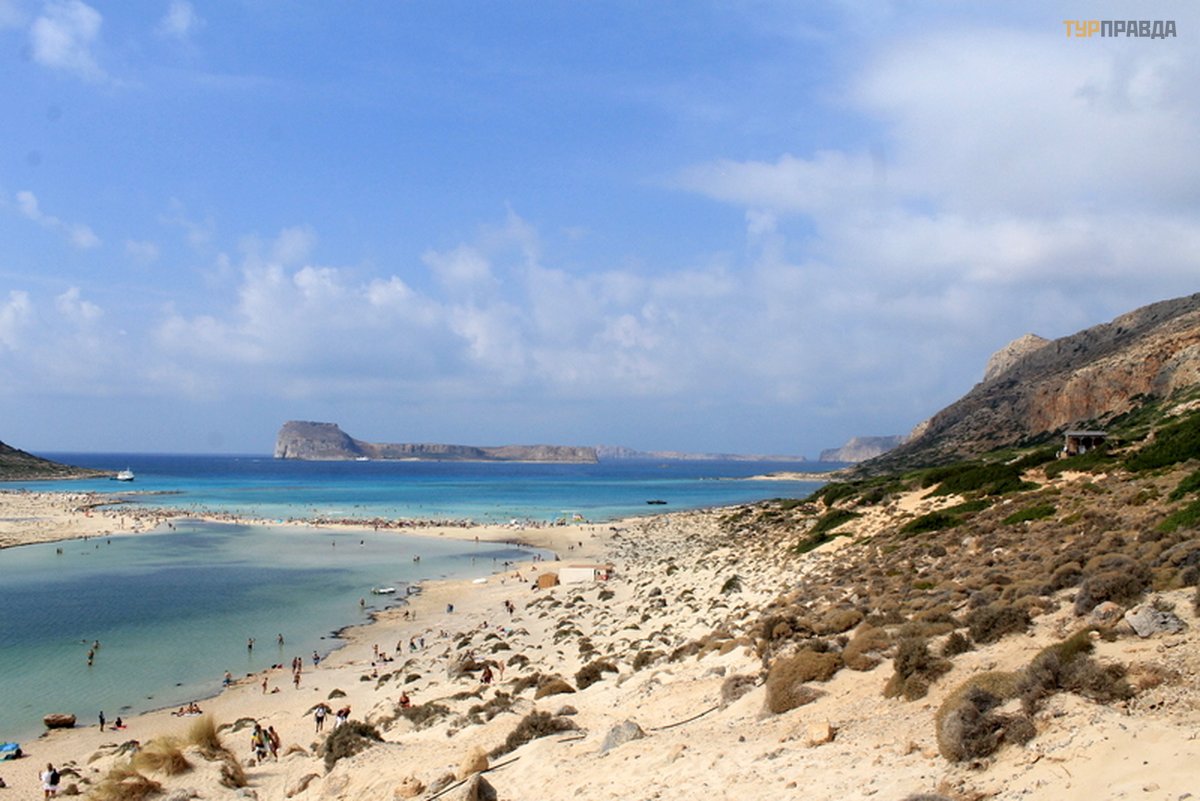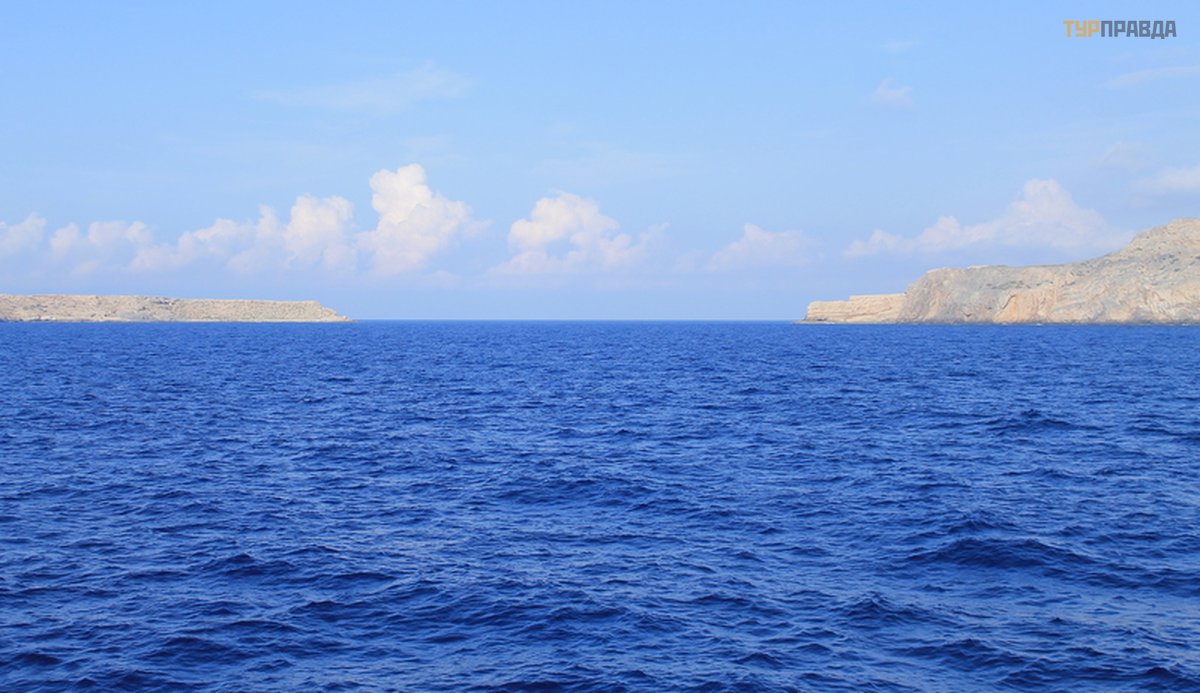By bus, ferry, car… Remembering Crete. Part 4. 17 shades of blue

To be continued. Start here:
Part 1. The puzzle is complete >>>
Part 2. In the labyrinth of history >>>
Part 3. “Candia remained for the descendants…” > >>
We also made this trip as part of an organized excursion, during which we were picked up by bus from the hotel, taken to the port of Kissamos beyond Chania, and there everyone was loaded onto a fairly large ferry. Looking at the number of people in the port, I was even afraid that there would not be enough space on the ferry for everyone, but somehow we settled in. ; )
In principle, a similar trip could be organized by yourself - by a rented car, in the same way, get to the port, and there you can get tickets for one of the ships departing for Balos Bay. Or by car, drive along the upper road towards the village of Kaliviani, and then along the dirt road towards the parking lot, from where the descent to the bay begins. This is where the disadvantages of this option lie, based on the reviews and recommendations I read: firstly, the parking lot is often completely occupied and the car has to be left somewhere at the entrance in not very favorable conditions; secondly, driving on a dirt road threatens to damage the bottom and wheels of the car, which, as a rule, is never covered under the terms of Cretan insurance; and thirdly, the descent (and, accordingly, the ascent) to the bay is quite steep and tiring. But it's up to you. We took the path of least resistance. : )
Yes, and now, in fact, about what all this fuss is for. Balos Bay is considered another hallmark of Crete and is positioned as the confluence of three seas - the Cretan, Ionian and Libyan, which in fact are one sea - the Mediterranean. But the bay looks simply amazing, which is why it is very popular with tourists. On the way to the bay, tourists are also brought to the island of Gramvousa, where the remains of a pirate fortress are located. In general, the excursion is purely visual and natural. : )
However, let's return to the port of Kissamos - our ferry has set sail and the journey has begun.
The journey takes about an hour, but it does not have time to get bored, as all attention is paid to the sea and mountain landscapes passing overboard...
…as well as Cape Korikos, with which one of the versions connects the name of our first stop - the Gramvousa Islands. It is believed that it could have arisen from the Venetian "Capo Buso" - "Leaky Edge", because of the cave at the tip of Cape Korikos, opposite which are the islands of Imeri Gramvousa and Agria Gramvousa.
In the meantime, our ferry docks at the Imeri Gramvousa Island, on top of which you can see the remains of a fortress. . .
. . . and where two attractions for tourists are provided - climbing to the aforementioned fortress and swimming in the bay. Most choose to climb the fortress.
In principle, the ascent is not to say that it is very difficult - especially if you constantly stop, examine and photograph the beauty that opens up as you ascend.
And finally, the entrance to the fortress:
It is generally referred to as a pirate fortress, although Gramvousa has changed many owners over its long life. Built in 1585 by the Venetians, the fortress of Imeri Gramvousa served as an outpost for the defense of the northwestern tip of Crete and later turned out to be among the three fortresses that the Turks could not recapture from the Venetians during the Cretan War. And only "thanks" to the betrayal of the then commandant of the fortress, the Neapolitan Gioccia in 1691, the fortress passed into the hands of the Turks. But their reign was relatively short-lived. In 1825.300 Greek rebels were able to take the fortress by cunning and settle there.
Over time, the number of inhabitants of the island increased and reached more than 3 thousand people who had to live on something. And what is the life of the population of a small island with not very friendly neighbors? That's right, piracy. And if at first the inhabitants of Gramvousa were engaged in politically justified robbery at sea, attacking only Turkish ships, then over time the paradigm changed and they began to turn their eyes (and weapons) to any ship that appeared in the surrounding waters. This is where the “pirate glory” of the fortress came from.
Now there is almost nothing left inside the fortress, except for the remains of the old pavement.
Except for a very photogenic church, although I'm not entirely sure of its origin. They say that at one time pirates built the Church of Our Lady of Kleftrina (from the word “kleft” - a thief, an armed rebel) on Gramvous, but I can’t say whether we see it.
Therefore, the main occupation at the top is the contemplation of the surrounding landscapes and the comparison of the three seas. : )
As well as trying to see the bay of Balos, which is not very visible due to today's weather.
But it's time to go down to our ferry, which is waiting for us at the pier.
Next, a small passage and we are landed in the Balos Bay, where the seas, of course, do not formally converge, and the difference in the shades of the water is explained by the different bottom topography, the angle of refraction of the rays, etc.
But when you see all this beauty, the rational part of thinking turns off, and you just turn your head enthusiastically in an attempt to distinguish all 17 promised shades of water in the bay from almost transparent whitish and turquoise...
…to harsh inky blue…
. . . and appoint a place that you personally will consider the confluence of the Cretan, Ionian and Libyan seas. Well, for example, here. ; )
And if you look closely, you can discern a thin pink strip on the surf line, which makes the beaches of Balos Bay related to the famous Cretan beach of Elafonisi, where, according to stories, all the sand is so pink. Although, I suspect, in fact, the situation is the same there and the pink color is present only along the water's edge. : )
If you still have some strength left, you can climb the nearby slope a little, so that you can look at the bay at least a little from a height.
And then take a walk to the Libyan Sea and admire its "lunar" landscapes. . .
. . . in sharp contrast to the "island" landscapes of the Cretan Sea.
But nothing lasts forever, and now it's time to get back on the ferry. We cast farewell glances at the bay lost in the fog...
…admiring the surrounding views. . .
. . . and so quietly return to the port of Kissamos, where our sightseeing bus is already waiting for us.
Well, we enjoyed the organized excursions, took the bus and the ferry, to next part we will test the rented wonder of the German car industry.


